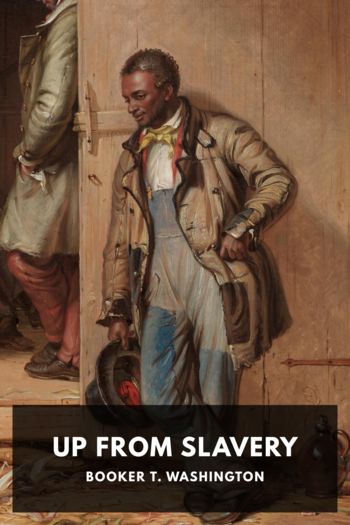A Calculated Risk, Katherine Neville [english novels for students txt] 📗

- Author: Katherine Neville
Book online «A Calculated Risk, Katherine Neville [english novels for students txt] 📗». Author Katherine Neville
After dinner, I spent the time needed with Charles, to finish calculating the risk. I already knew I was talking about enormous sums of money. Billions a day moved through the bank’s wire systems, and though it couldn’t all disappear at once without being missed, I knew I could juggle a big chunk of that money for extended periods. The question was, how big a chunk? And how should I spread it around to best conceal my activities?
I also wanted to see how much the risk increased, from the perspective of international crime apprehension—which was why I’d gone to Charles in the first place. He could give me data about the number of crimes per year, audits per year, and the kinds of crimes disclosed through audit or by other means. After jotting some notes from last night’s chat with Charles, I was ready to begin:
“GIVE ME THE SPREAD ON DOMESTIC ELECTRONIC MISAPPROPRIATIONS ON A FIVE-YEAR PLOT,” I tapped in.
“YOU MAY SPEAK IN ENGLISH,” said Charles, “I’M A USERFRIENDLY MACHINE.”
“HOW MUCH MONEY HAS BEEN STOLEN IN THE LAST FIVE YEARS USING COMPUTERS?”
“STOLEN FROM WHERE?” asked Charles. My patience was beginning to wear thin.
“DOMESTIC,” I repeated, banging my fingers down on the keys.
“YOU WANT TO KNOW HOW MUCH MONEY’S BEEN STOLEN FROM PEOPLE’S HOMES?” he asked innocuously. Wise-ass.
“WITHIN THE CONTINENTAL UNITED STATES OF AMERICA,” I said. “DON’T PLAY GAMES.”
“I AM TRAINED TO SCAN FOR LOGIC—NOT FOR HIDDEN MEANING,” Charles pointed out.
He went off to tax his brain—a rather rusty one, I had to admit. He was a computer of ancient but rare vintage, and despite his personality, I couldn’t help hoping he’d still be in service a dozen years hence. I knew exactly how old Charles was; I’d known him most of his life. In fact, if it weren’t for me, he wouldn’t be alive today.
When I’d finished school twelve years earlier, my first job had been with the gigantic New York computer company Monolith Corp. Like most programmers, I was always searching for an all-night data center where I could get time on the big machines; and one day I found one as I was flipping through our massive Data Center Guide to Manhattan. It was called the Scientific Data Center—and judging by the address, no one in his right mind would go up there at night.
That evening, I took a cab to the small, grimy office building sandwiched between dark and foreboding warehouses, not far from the waterfront at East End. There was no night guard—not even a door buzzer—only a hand-pulled elevator that I found off the alleyway at the rear. Hoisting myself to the sixth floor, where the center was allegedly located, I found the sorry little room.
The space was barely large enough to squeeze in all the computers—you had to climb over them to get at the drives—and bunches of cable were hanging everywhere, even from the ceiling. There was an inch deep of soot over all; it looked like a cross between a car repair shop and a spaghetti factory. How could machines keep running in all that filth and disorder?
The night operators—two Brits, both named Harris—were amazed and thrilled to see me there. No one had visited this center in years, and they spent each lonely night playing chess, Go, and mah-jongg with the computers.
The center itself, as I learned, was actually an archive for the United States government—its only client—and had been accumulating data, year after year, through some forgotten regulation requiring off-site backup of historical government records.
That was the night I first met Charles—Charles the bonny, Charles the fair, Charles whose wonderful, earth-shattering repository of knowledge would keep me dazzled for years. And no one knew that he was there at all—or what his existence was worth—but me!
Over the years, Charles’s data on transportation, banking, and a half-dozen other government-regulated industries had helped me with a myriad of jobs. My clients thought I was a genius when I pulled from thin air those impressive figures that should have called for years of research.
When Charles “came down” each night at one o’clock, the Harrises would leave and take a meal with me at a shabby Italian restaurant down the street, whose neon sign provided the only light on the dismal block. Through a chicken-wire fence beside the table, we watched old men playing bocci for bottles of cheap Chianti; we ate pasta and veal parmigiana, and sang old Neapolitan street songs. And it was there—nearly a year later—that the Harrises told me in hushed whispers that Charles’s life was about to end.
Machines do not grow old as people do—with their loved ones and lawyers clustered about their bedside awaiting the last gasp. Charles’s model number had come up on the official “obsolescence list”—which meant that one day soon, with little fanfare, he’d be picked up, thrown in the back of a truck, and hauled off to a company that would “reclaim” the precious metals in his wiring and sell off the rest of him for scrap. It seemed a sorry fate for a computer as wonderful as Charles. And not only that; if Charles were scrapped, a new machine would be installed in his place, and someone might learn what a gold mine of data he had tucked away in his little core banks.
So, one morning, I went into the contracts department at Monolith Corp., pulled all the paperwork on Charles, and stamped it sold to the U.S. government. Voilà! Charles disappeared from the list of corporate fixed assets. I predated his “sale” to the previous year so that no one would notice it during this year’s audit. The government would still pay for operating the center—a monthly rate, with the cost of Charles built into the price of the service. And Monolith Corp. would still maintain the facility—thinking the government now owned Charles, and was continuing to pay them only for service and premises.
Looking back, I found that the acquisition of Charles was my first illegal act. He’d been





Comments (0)